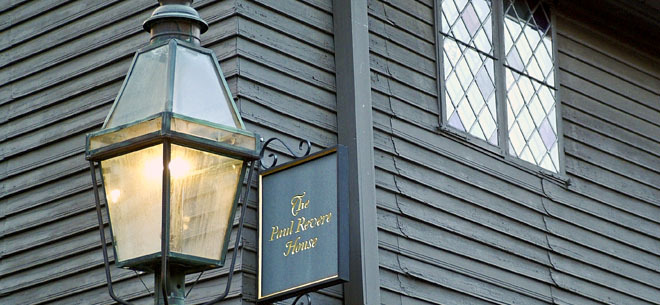Taking the Mystery Out of Boston History

Listen, Panorama readers, and you shall hear, Of the house and the ride of Paul Revere.
As the oldest surviving residence in Boston, 19 North Square is a modest home with a not-so-modest tale. In 1770, Paul Revere purchased the house, built circa 1680; five years later, Revere made his pivotal journey to Lexington that forever changed the fate of our country.
On the evening of April 18, 1775, Paul Revere left his North End home to warn fellow Patriots Samuel Adams and John Hancock of the impending invasion by British troops. On his way to Lexington, Revere alerted the countryside and eventually reached his destination. The next morning, Revere heard the first shots fired on Lexington Green.
“The shot heard round the world” marked the commencement of the Revolutionary War. Revere went on to serve as lieutenant colonel in the Massachusetts State Train of Artillery and commander of Castle Island in Boston Harbor.
Although Revere and his men didn’t see much action, the Patriots were victorious and the United States of America was born. Revere returned to his roots as a silversmith and ventured into the production of industrial supplies. In fact, a 900-pound bell made by “Paul Revere & Sons” is proudly displayed in the courtyard at the Paul Revere House.
After Revere sold his home in 1800, 19 North Square became a tenement for immigrants and the ground floor was remodeled for use as various shops, which included a candy store, cigar factory and bank as well as a vegetable and fruit business over the years. In 1902, Paul Revere’s great-grandson, John P. Reynolds Jr., purchased the deteriorating building to preserve his family’s history, a process that was completed in 1908 with the debut of the restored domicile.
Today, the Paul Revere House is owned and operated by the Paul Revere Memorial Association. With 90 percent of the original structure still intact—including two doors, three window frames, portions of the flooring, foundation, inner wall material and rafters—this historical landmark continues to give visitors an authentic look into Colonial life. —Melanie Potter


